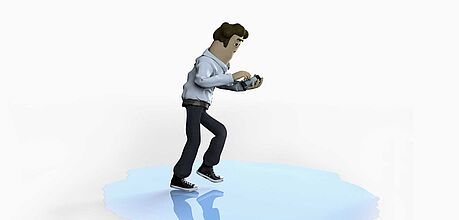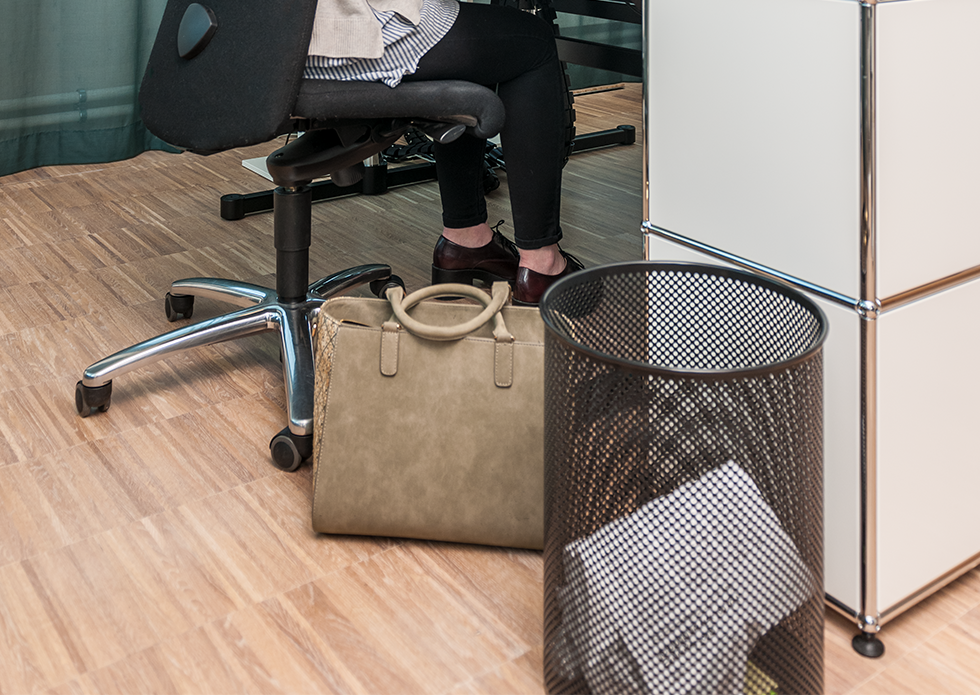


Construction sites are not the only place where occupational accidents occur. Danger that could lead to accidents also lurks in the office. Tripping and falling accidents are the most frequent and often as a result of inattention. 12 simple tips will help you to identify hazards in the office and deal with them.
Office employees take around 1,500 steps each day. The more active among us take a few thousand more. We take them automatically and without thinking. Indeed sometimes on autopilot – we feel particularly busy when we work on our smartphone emails and finish an online article on our tablet while on the move. Regardless of whether we are in the office, corridor or on the stairs, we think that walking presents no dangers. A grave error.
Even in the supposedly safe office, more than 15,000 accidents are recorded every year.1 Many are the result of inattention. A raised surface between rooms, a wastepaper basket, a bag sitting next to an office table, or an open drawer can all quickly turn into a tripping hazard. All the more so when our concentration is elsewhere, and our eyes are not on the way ahead. But in fact very little is needed in order to turn the office into an accident-free zone.
Each accident can be avoided following the right risk evaluation. The following 12 simple tips will help you to identify hazards and deal with them.
Risk evaluation is not just something for high-risk industries. Keep your eyes open when in the office and be systematic about dealing with potential tripping hazards as well as avoiding other hazards. In doing so, you are increasing safety levels in the workplace and helping to avoid accidents.
And don’t forget: be particularly careful when in a hurry. Tripping accidents always happen at the most inopportune moment. And can have long-term effects.
With good planning, there should be no chance for tripping hazards to develop. However, if they are unavoidable, they should at least be clearly marked. You will find tips and a short explanatory video in the FCOS BOX.
1 Source: SSUV, Berufsunfälle 2007-2016